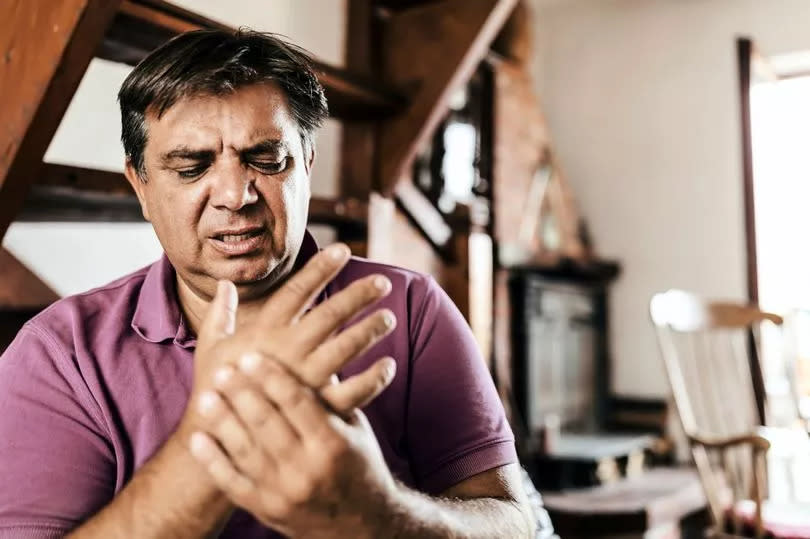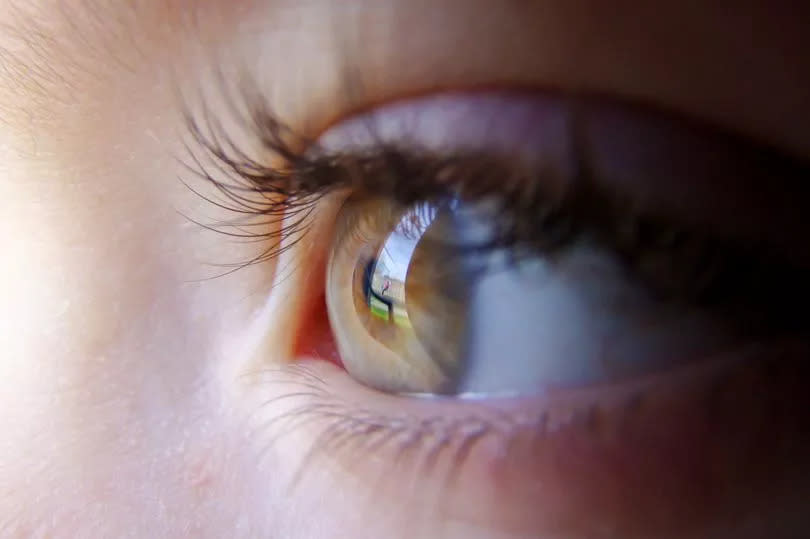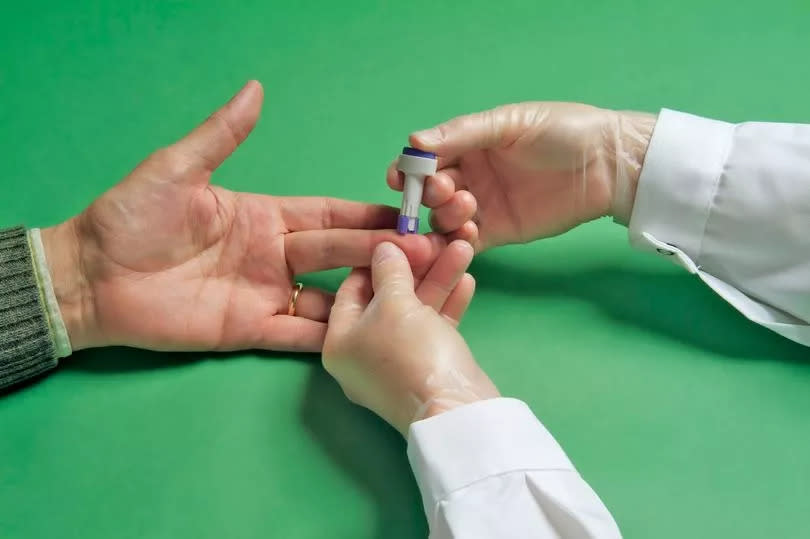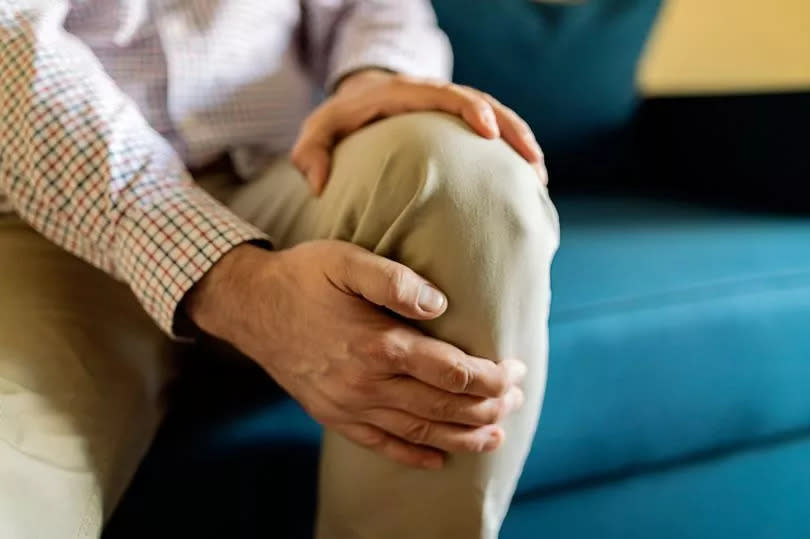Three red flags you have high cholesterol without going to the GP

Monitoring your cholesterol can be one of the simplest ways to tell if you are eating properly or getting enough exercise, but unless you head down to the GP, it is not always easy to tell just how fit and healthy you really are. While getting a blood test is important if you are worried about your health, many people are unaware that you can spot high cholesterol just by looking at someone.
Cholesterol build-up in your body is typically due to having a high-fat diet, smoking, drinking, and not getting enough exercise, or genetics. If enough of this fatty cholesterol starts to line your blood vessels, it can cause a blockage that could lead to serious health complications such as heart attack and stroke.
Developing high cholesterol becomes more and more likely as you get older, with more than two-thirds of men and women over 65 diagnosed with high levels during a routine health check-up. But anyone can develop high cholesterol, whether due to genetic or environmental factors, so being able to spot the symptoms of it building up in your body - just by looking in the mirror - is important.
READ MORE: Doctor shares four warning signs 'period blood' isn't part of natural menstruation
The only way to know how for sure if you have high cholesterol, which can be treated with diet, exercise, and medication, is to have a blood test. But if you spot any one of these signs in your face, hands, or legs, or are simply worried about your cholesterol levels, you should speak to your GP right away.
The British Heart Foundation explains the function of this fatty substance: "Cholesterol is a natural fatty substance in your blood. It’s produced in the liver and it's also in some of the foods we eat. Cholesterol is important to keep the cells in our bodies healthy.
"High cholesterol means that you have too much cholesterol in your blood. There are many things that can cause this. If you don’t take steps to lower high cholesterol, it can increase your risk of heart attack and stroke."
Face

A tell-tale sign that the levels of cholesterol in your body are too high can be spotted just by staring into someone's eyes. Or a mirror, if you are lacking another person.
Cholesterol travels though your body using its vast network of blood vessels, building up over time in certain places. If one of these places happens to be around your eye, there are three main ways this can manifest.
A common cholesterol symptom is called a xanthelasma, which can appear as bumps on your eyelid and on the skin around your eye. This is caused by the build-up of fatty cholesterol deposits under your skin, giving the bumps a yellowish appearance, and should not cause any irritation, but can be a sign of fats building up in your blood.
Another frequent sign that can be seen in someone's eyes is called the arcus senilis, which is when a blue, white, or grey circle appears around the coloured part of your eye, the iris. It can start as a line at the top and bottom of your iris, before developing into a circle.
Men are more likely to develop this circle around their iris, which is a red flag that your cholesterol levels might be creeping up that becomes increasingly common as you age. If this ring occurs in children it is called arcus juveniles, and is an even stronger sign that their cholesterol is out of whack.
The third most common symptom of fat building up in your blood vessels is if you develop a retinal vein occlusion, which causes your eye to bulge. This is a serious condition that can be caused by cholesterol breaking off and blocking the vein that delivers blood to your retina, causing it to leak.
Hands

There are just as many signs that you can spot of cholesterol building up in your hands as there are in your eyes. But many might dismiss a swollen knuckle, or small bumps on your hands.
Tendon xanthomata can cause cholesterol deposits to build around tendons in your body, making them sore and swollen. While this can be most noticeable on your knuckle, it can happen anywhere, such as your Achille's tendon.
As with many signs of high cholesterol, these can be often attributed to other factors, as with one of the other tell-tale signs that your levels might be too high - frequent or painful tingling in your hands.
As cholesterol deposits in your blood vessels start to limit blood flow, this can cause your hands to tingle as oxygenated blood is struggling to get through. However, it does not cause numbness, so if you are experiencing this symptom but can't feel your fingers, it is not due to your cholesterol levels.
It can also cause your nails to become pail, a key sign that not enough blood is flowing through the vessels in your hand.
Legs

These symptoms, which occur as cholesterol causes plaques to form in your blood, can also cause problems in your legs. As these vessels narrow, numbness and tingling can spread throughout your legs.
This can have a series of complications and should trigger a visit to the GP as you could be suffering from Peripheral Artery Disease. The NJ Cardiovascular Institute explains: "Your legs are quite far from your heart, but they’re also at risk of complications from high cholesterol.
"Peripheral artery disease (PAD) is a complication that can develop when the arteries in your legs get too narrow due to buildup from high cholesterol levels.
"PAD can cause numbness and tingling in your legs or feet. Loss of sensation can increase your risk of ulcers and other slow-healing wounds. Another common symptom of PAD is leg pain that feels like muscle cramping, particularly with physical activity."
If you experience any of these symptoms, or are simply concerned about your health and lifestyle, the only way to find out your cholesterol levels and get advice on how to lower them, is by visiting your GP and taking a test.

 Yahoo News
Yahoo News 
